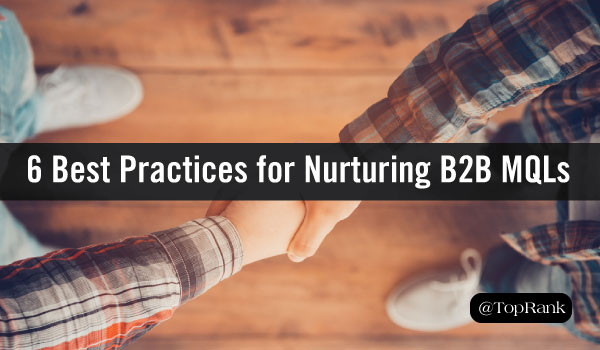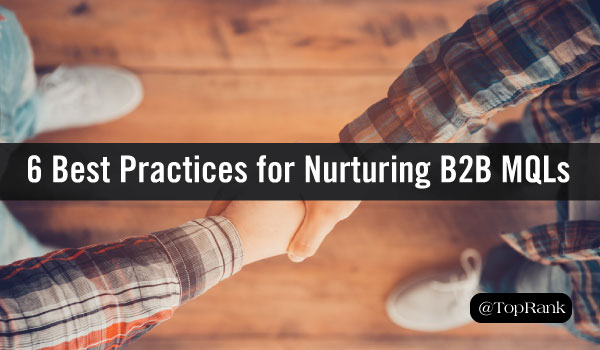You know this, too—it’s time to double-down on nurturing those MQLs. According to DemandGen Report’s 2016 Lead Nurturing Benchmark Study, 89% of marketers use lead nurturing programs as part of their demand generation strategy. In addition, the remaining 11% said they plan to start a lead nurturing program in the next 12 months. Depending on your product or service, and your marketing mix and program goals, you’ll want to work with your marketing and sales team to define each lead type. If you want to create relevant content that nurtures them throughout their journey, you need to understand your audience’s pain points, what they care about, how they like to get information, and what influences their purchasing decisions. If you don’t already have them, build out customer personas that define who your ideal customers are—and what they look like at each stage of the sales funnel. Read: Adele Revella Weighs In On Connecting B2B Content to Customers #3 – Understand where your leads are in the sales funnel. This gives you important insights into where you stand with prospects, and can help you plan you segment your list to create nurture more effectively. Depending on your prospect base and how the information will be used you can include simple qualifiers such as: Company Name Title Area of Interest #4 – Audit your existing content for repurposing opportunities. Nurture.

The rise of the internet, digital technologies and social media platforms have transformed the way consumers make purchasing decisions—and not just for B2C consumers, but for B2B as well. In fact, according to CEB, B2B buyers are 57% of the way through a purchasing decision before engaging with a sales rep.
But, as a savvy B2B marketer, you already knew all this. So, you’ve designed an integrated strategy featuring a hearty mix of marketing tactics to help build trust and awareness as prospects do their research. You’re turning out thoughtful, relevant content that informs, engages and inspires action. You’re working with industry influencers to add credibility and authority to your efforts. Heck, you’re even driving what you believe are solid marketing qualified leads (MQLs).
However, there’s a problem: The leads you’re generating in aren’t translating into sales. What’s a savvy marketer to do? You know this, too—it’s time to double-down on nurturing those MQLs.
Simply put, MQLs are warm prospects who are not ready to make a purchasing decision yet—and lead nurturing can help you turn up the heat. And most of you are probably doing some form of lead nurturing already. According to DemandGen Report’s 2016 Lead Nurturing Benchmark Study, 89% of marketers use lead nurturing programs as part of their demand generation strategy. In addition, the remaining 11% said they plan to start a lead nurturing program in the next 12 months.
But whether you’re seasoned at lead nurturing or just getting started, you’re likely facing some common struggles. DemandGen Report’s study also revealed that more than half of marketers ranked “developing targeted content by buyer stage/interest” as their greatest challenge. Other top challenges included adapting to modern B2B buyer expectations, changing and unpredictable buyer behavior, and processes and workflow.
In this post, we share tips and best practices for heating up your MQL nurturing efforts, so you can build trust and relationships with prospects, and hopefully hand them off as SQLs (sales qualified leads) when the time is right.
#1 – Determine what qualifies as a qualified lead.
Every company has a different perspective on what MQLs and SQLs actually look like—and some may not differentiate between them at all. In addition, every lead is different and not all leads are created equal. Depending on your product or service, and your marketing mix and program goals, you’ll want to work with your marketing and sales team to define each lead type.
Why is this so important? At a basic level, it makes sure that everyone is on the same page and enhances communication between the two departments. But perhaps more importantly, understanding the differences between the two helps you craft a more effective strategy—and ultimately—help you serve up higher-quality sales-ready leads.
Read: Want Better Leads? 7 Tips for Achieve Sales & Marketing Alignment
#2 – Make sure you have a deep understanding of your target customer.
It’s no secret that audience and customer knowledge is the foundation of all marketing initiatives. If you want to create relevant content that nurtures them throughout their journey, you need to understand your audience’s…

COMMENTS